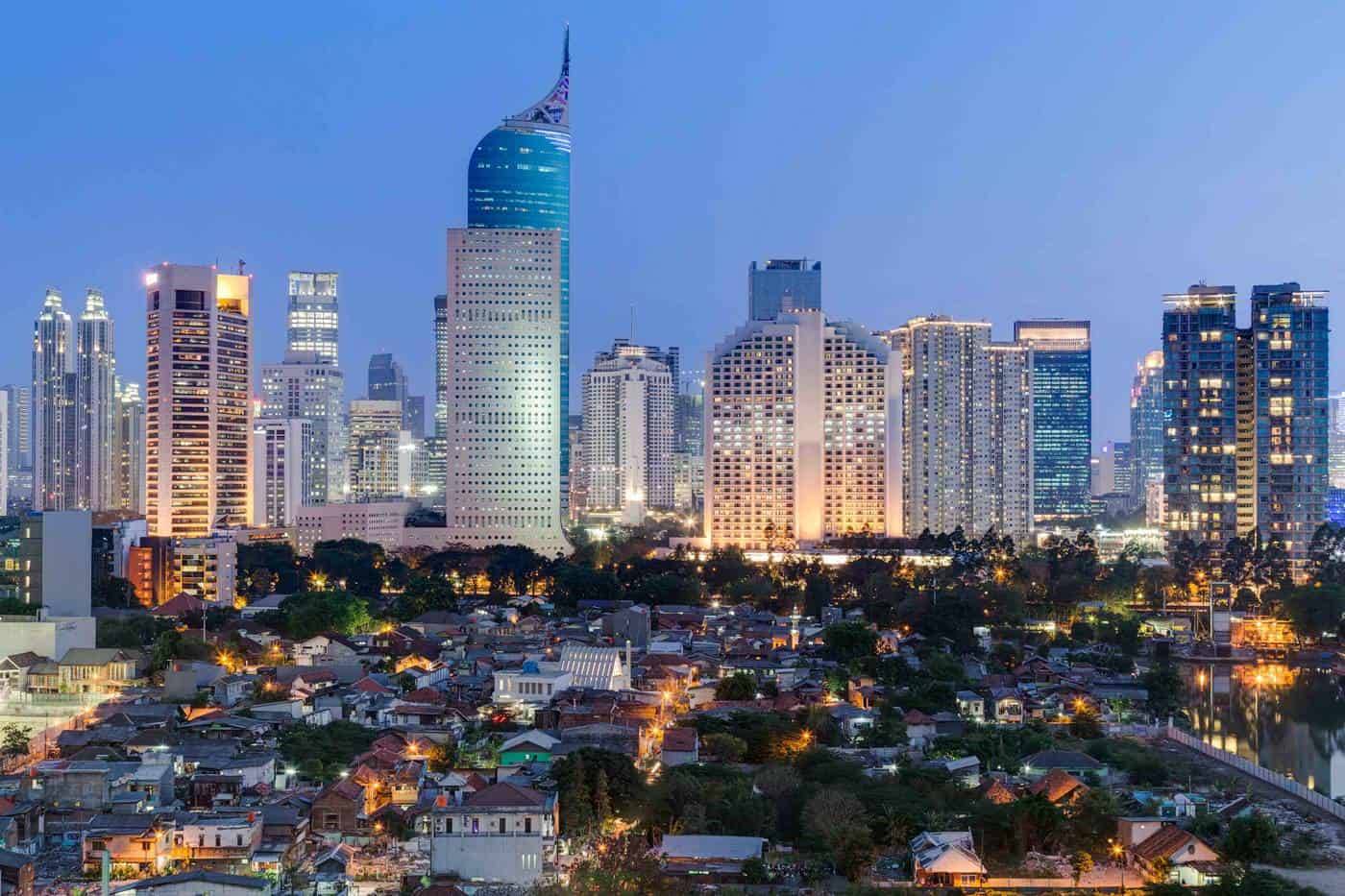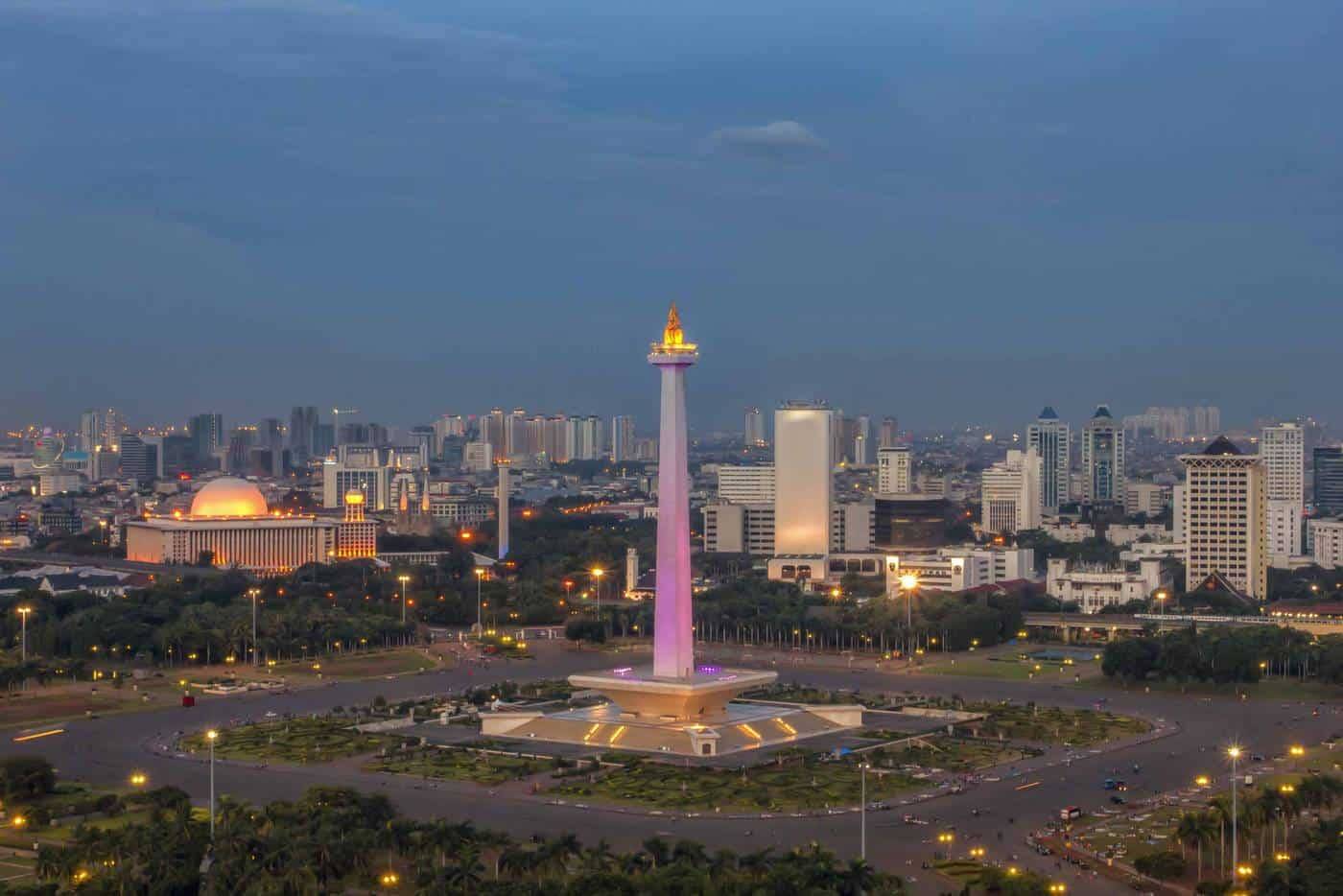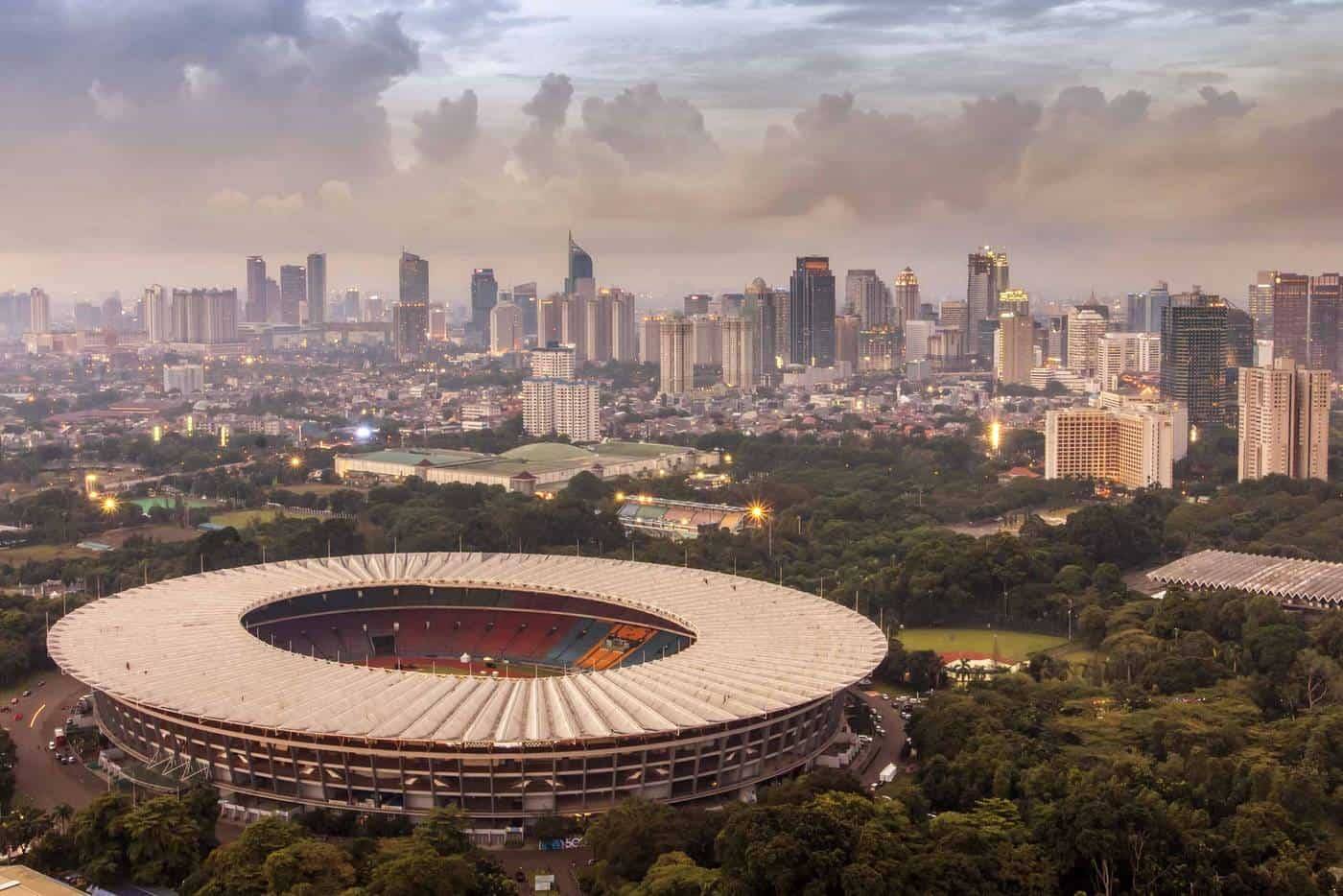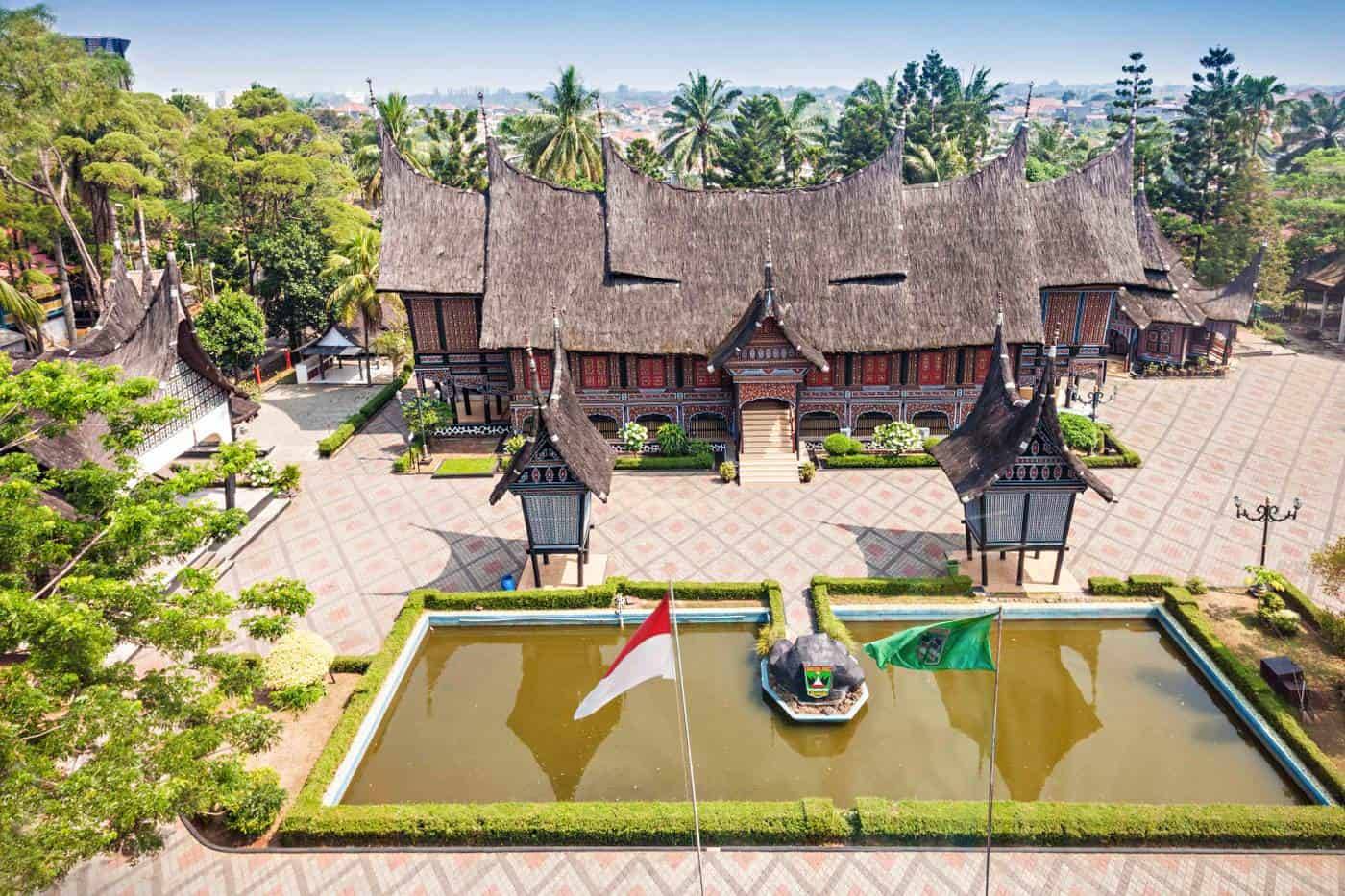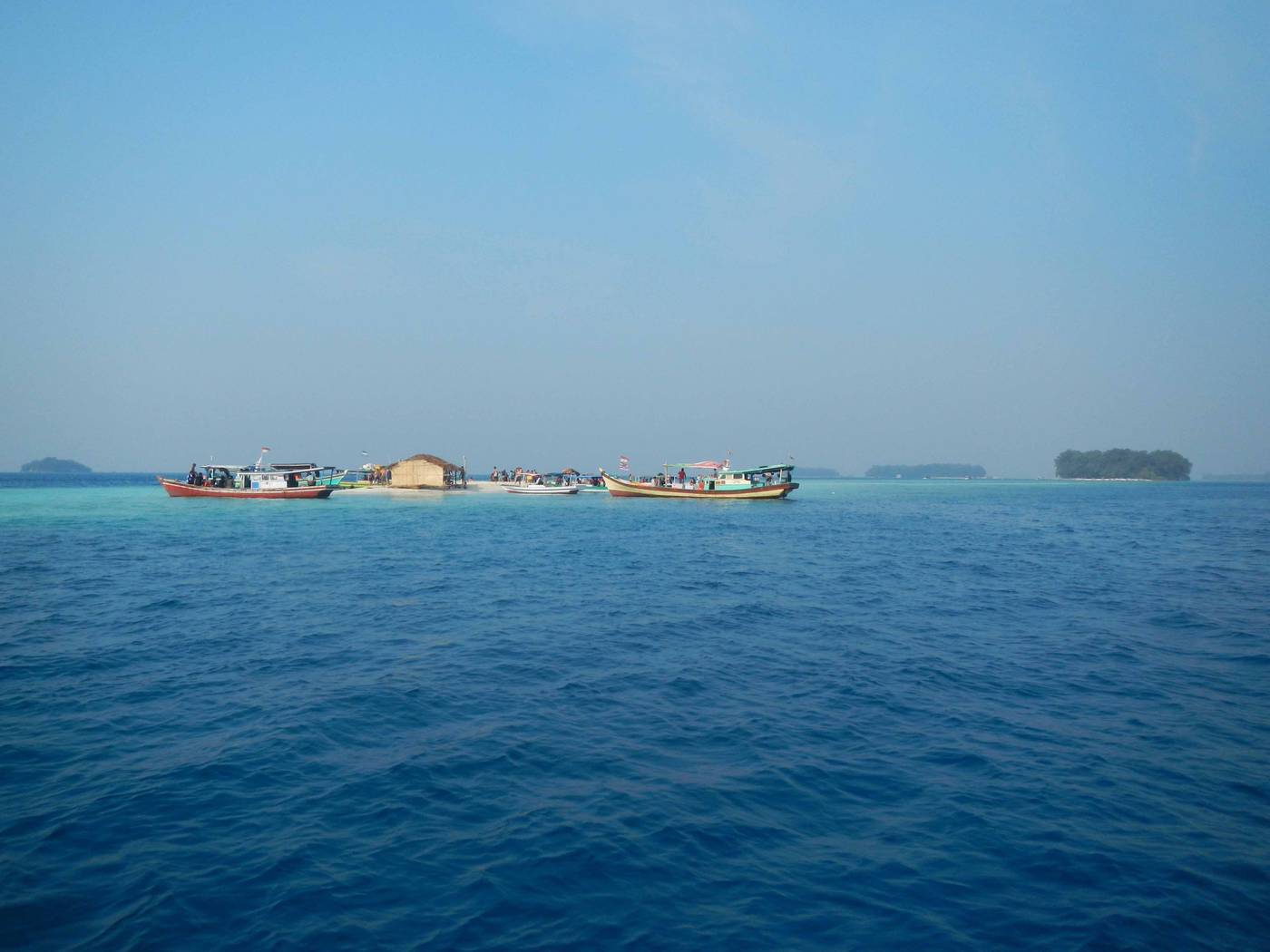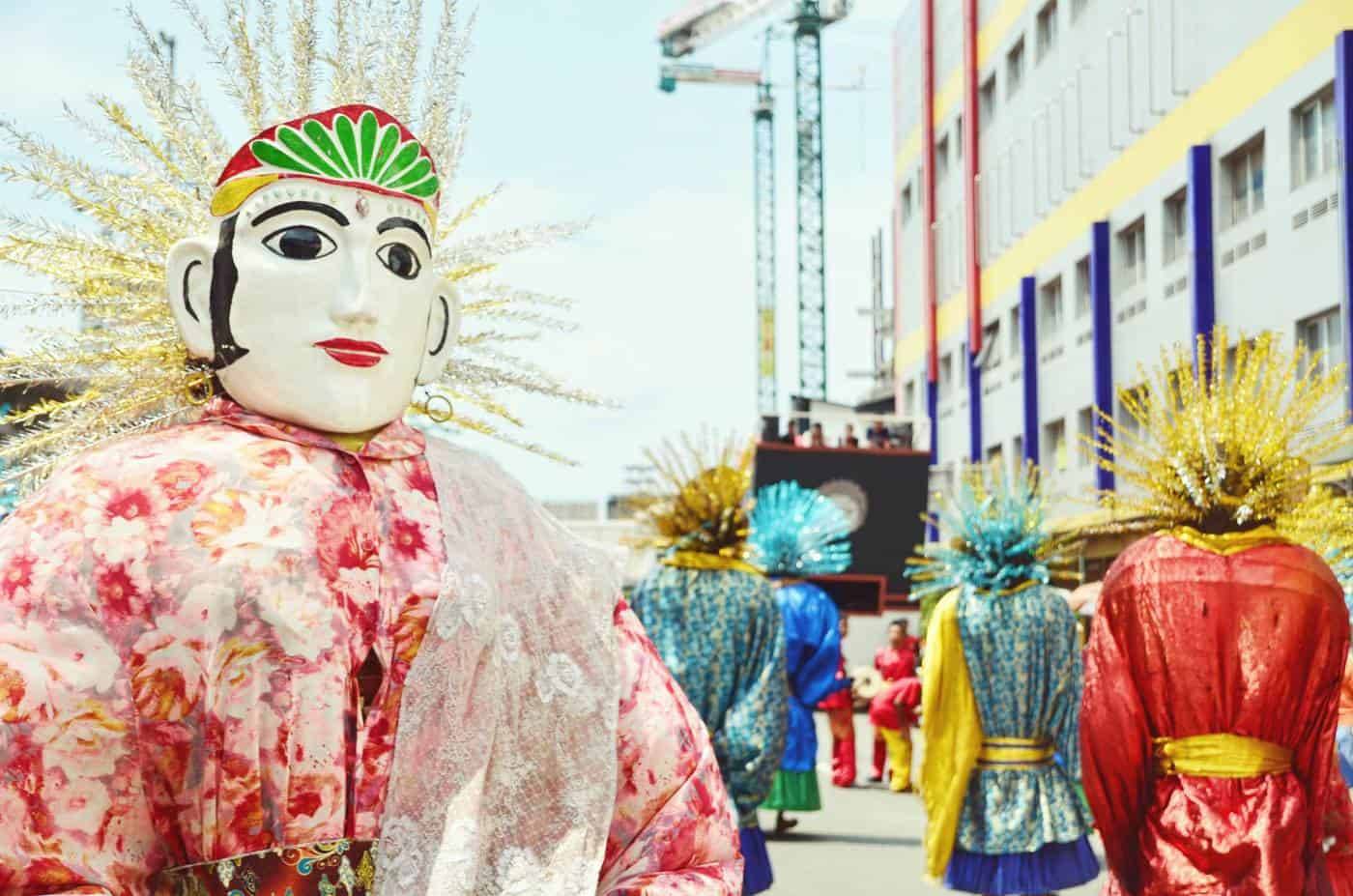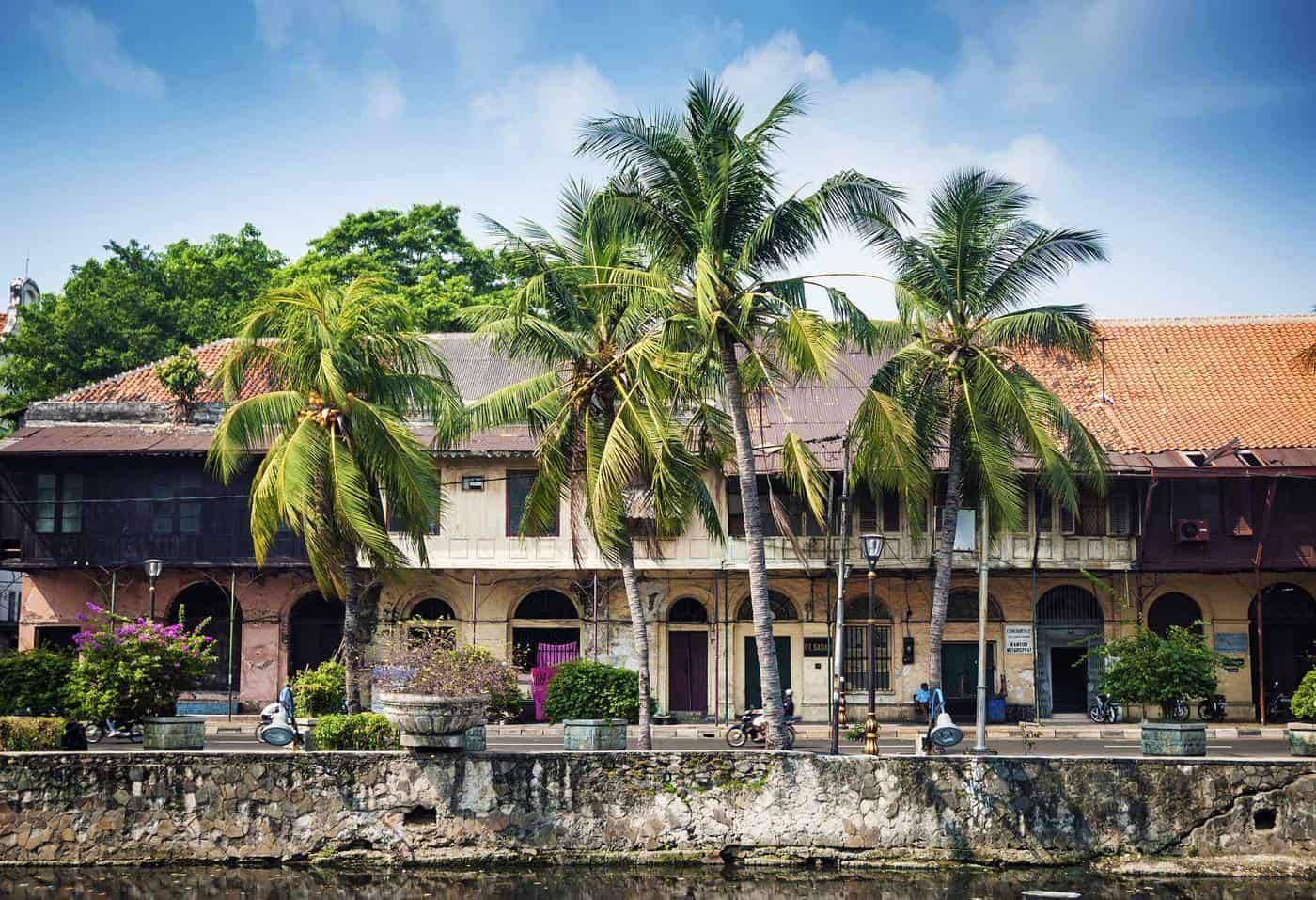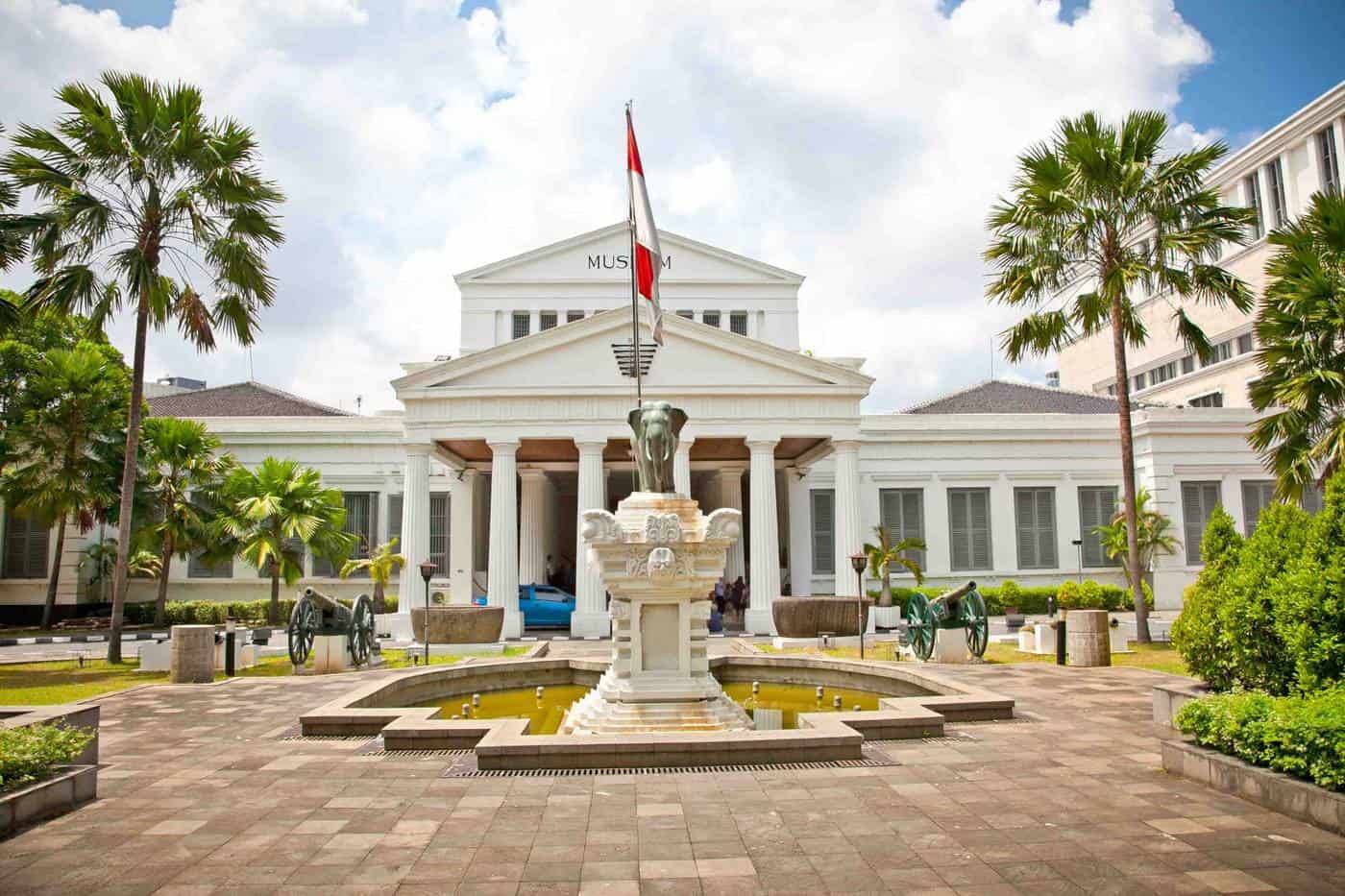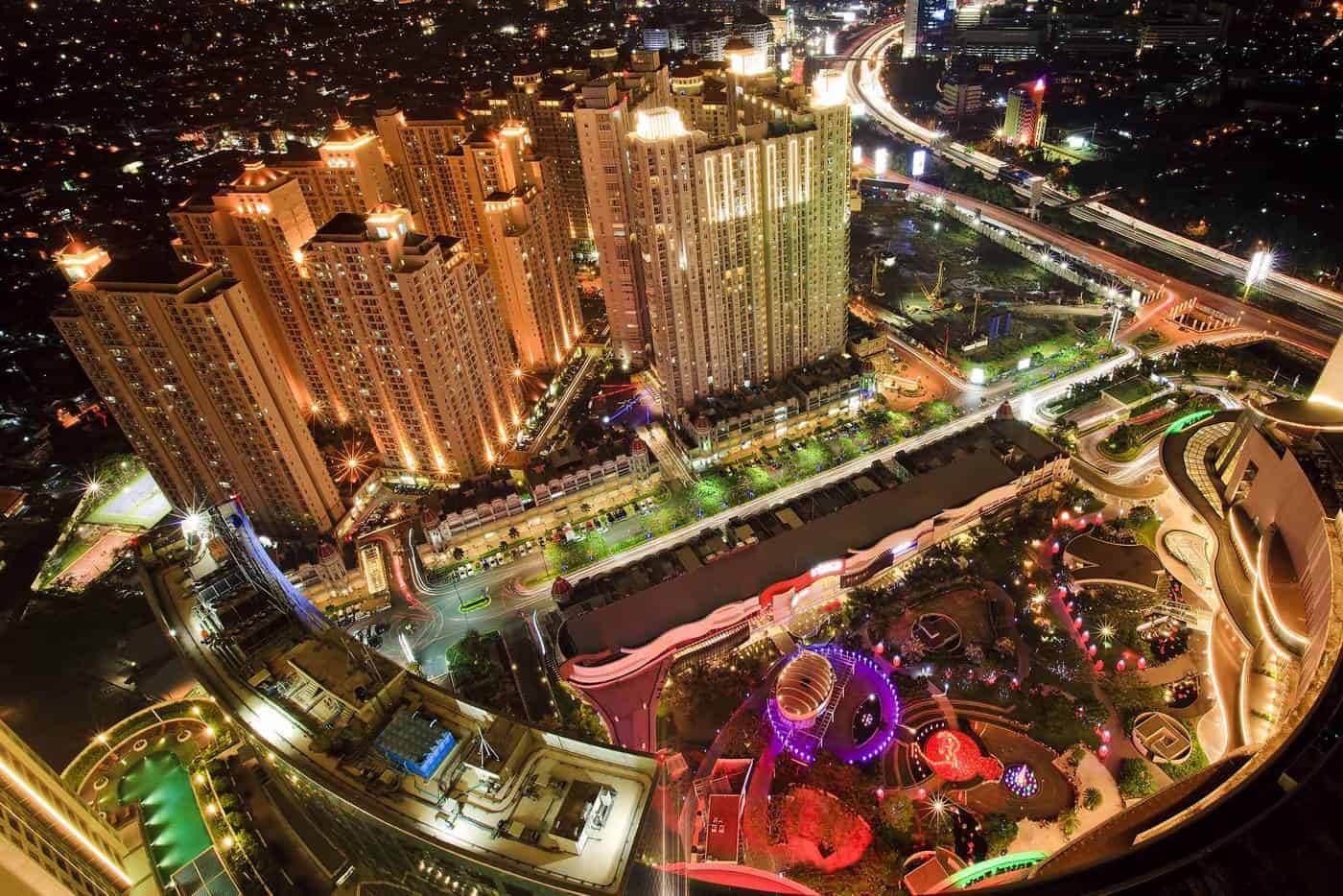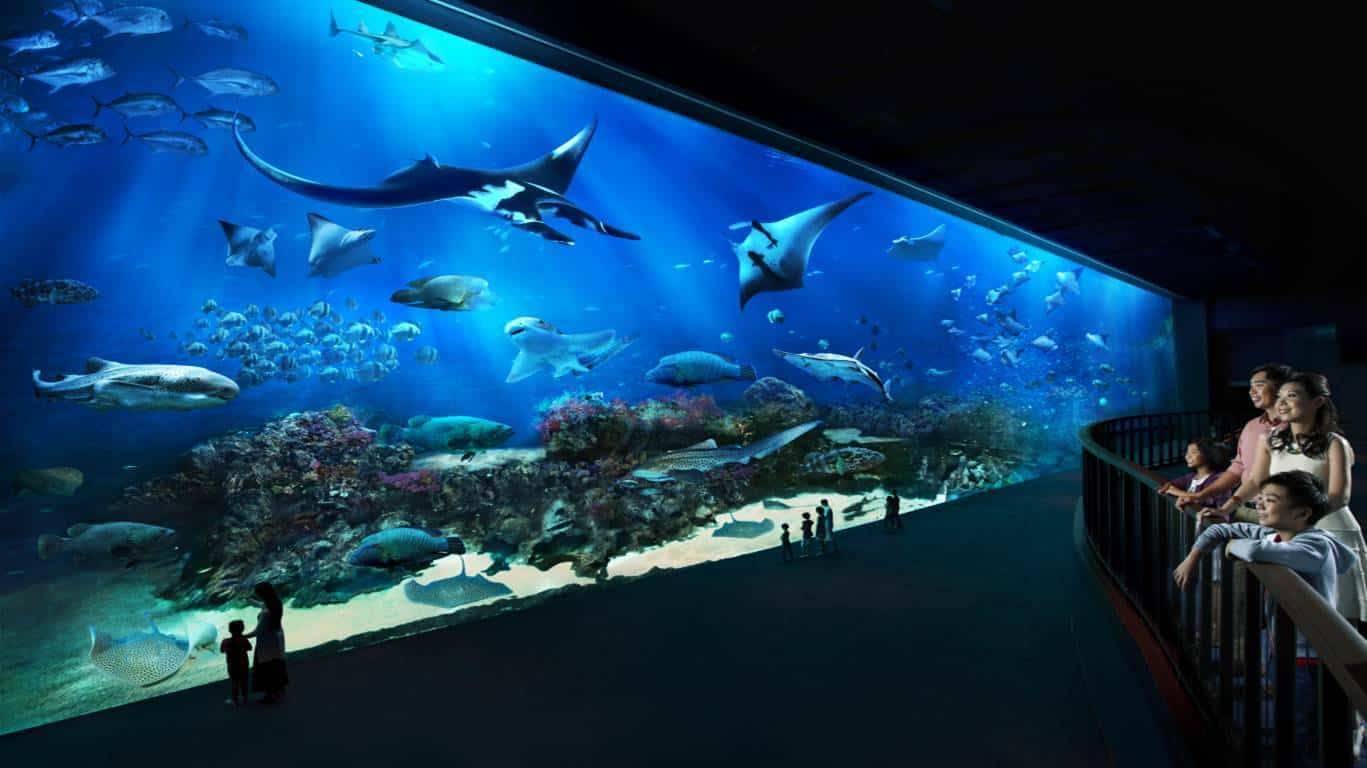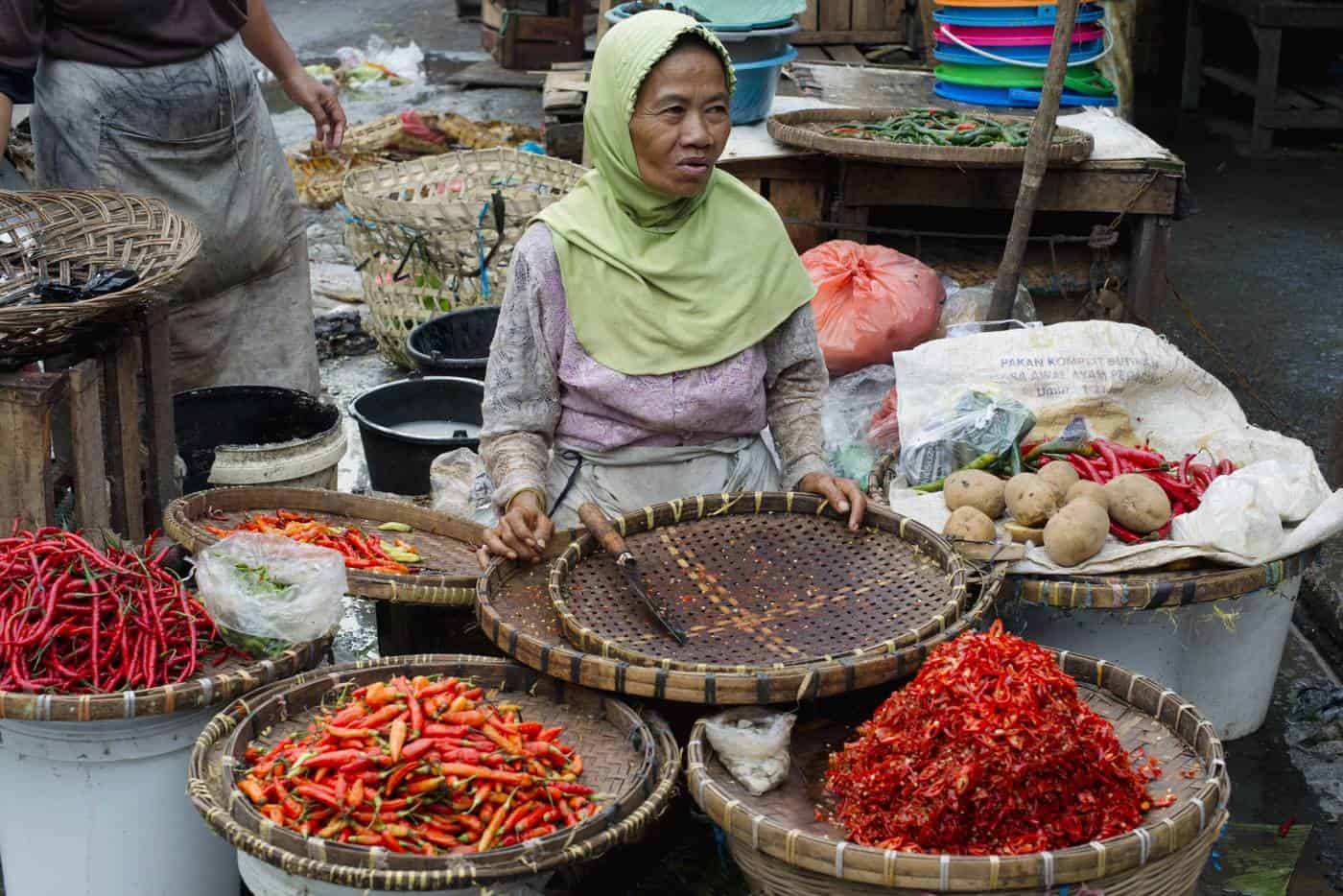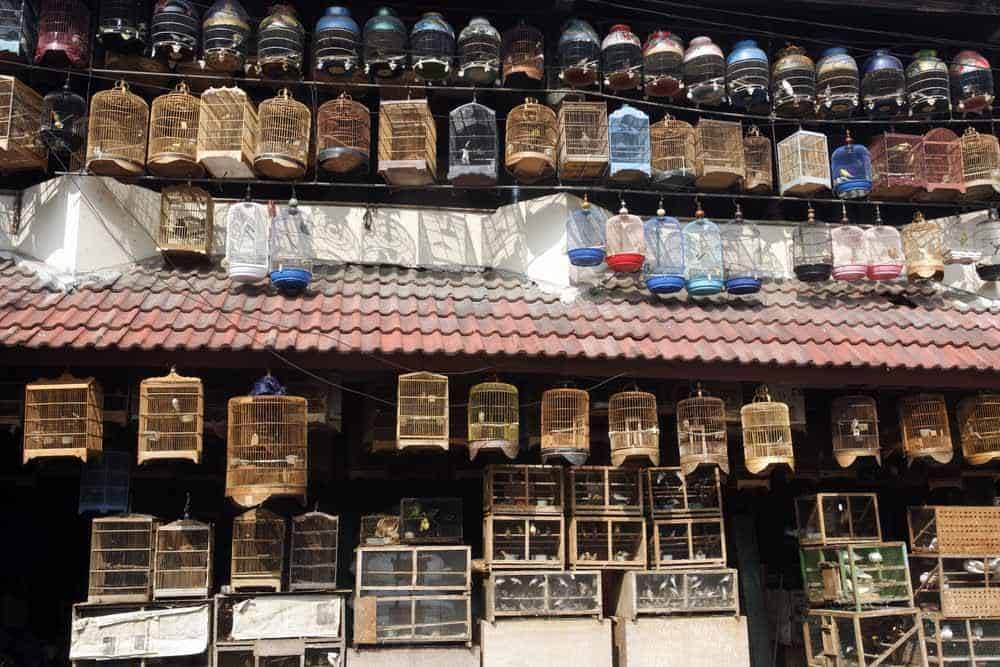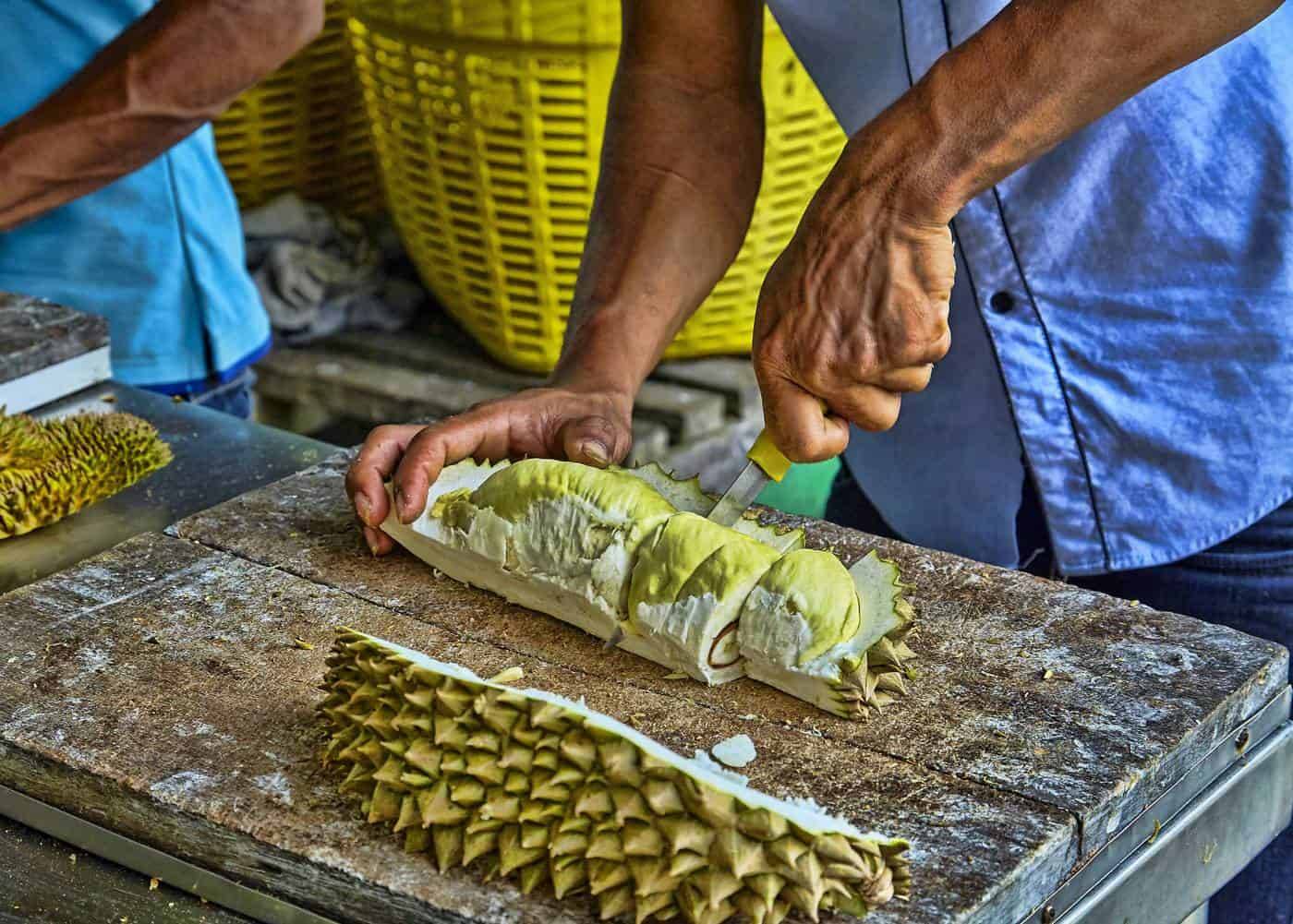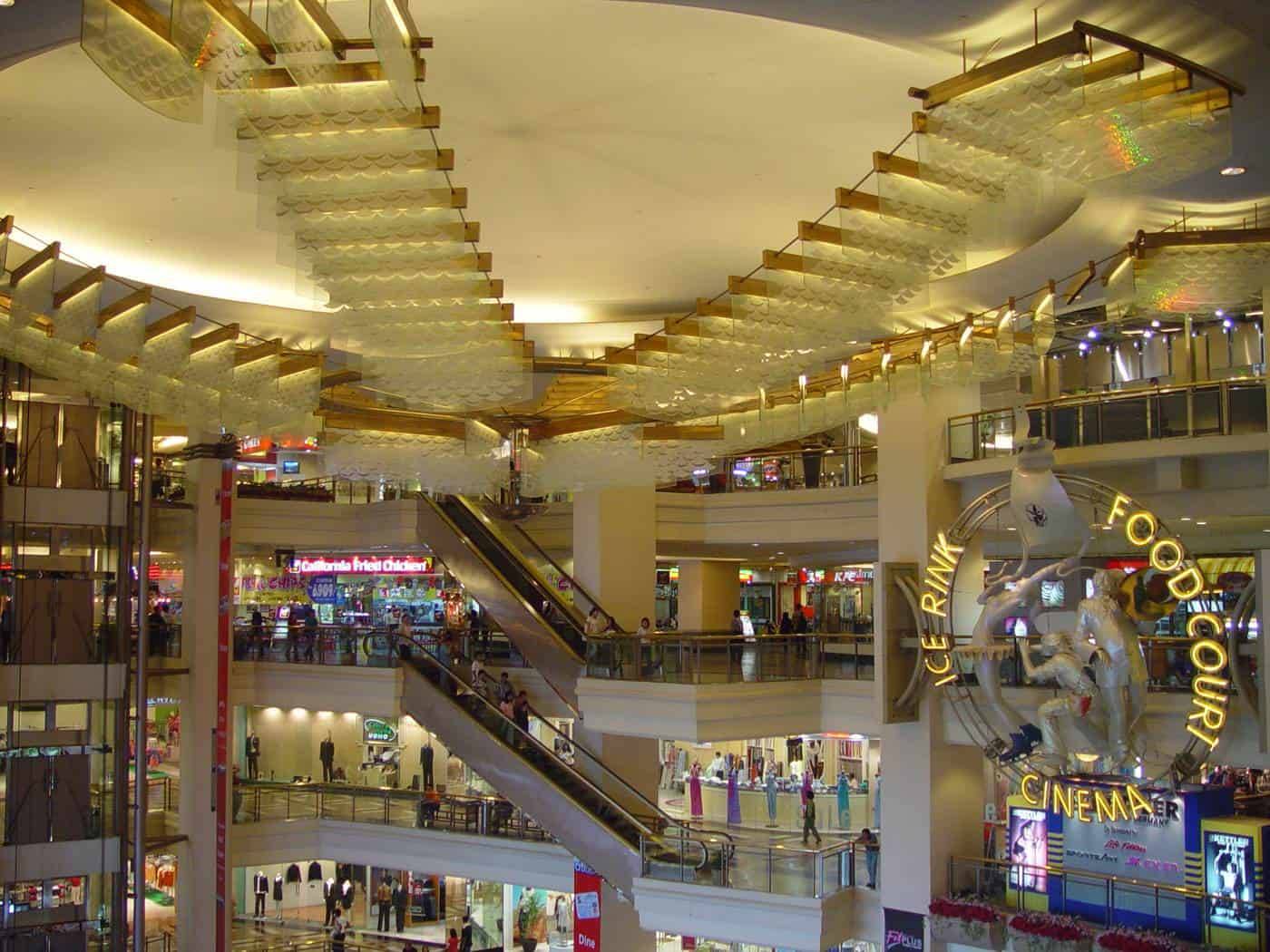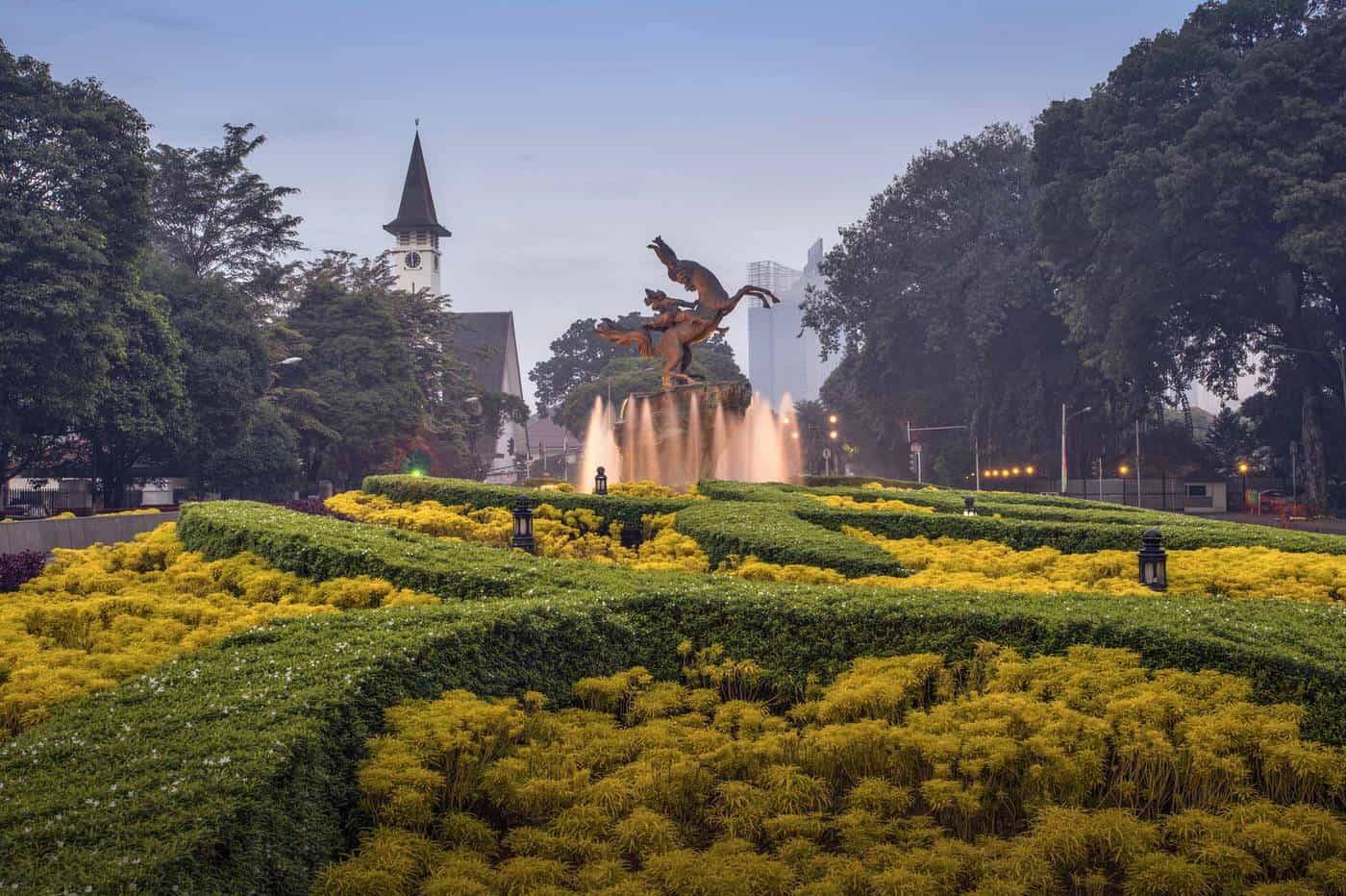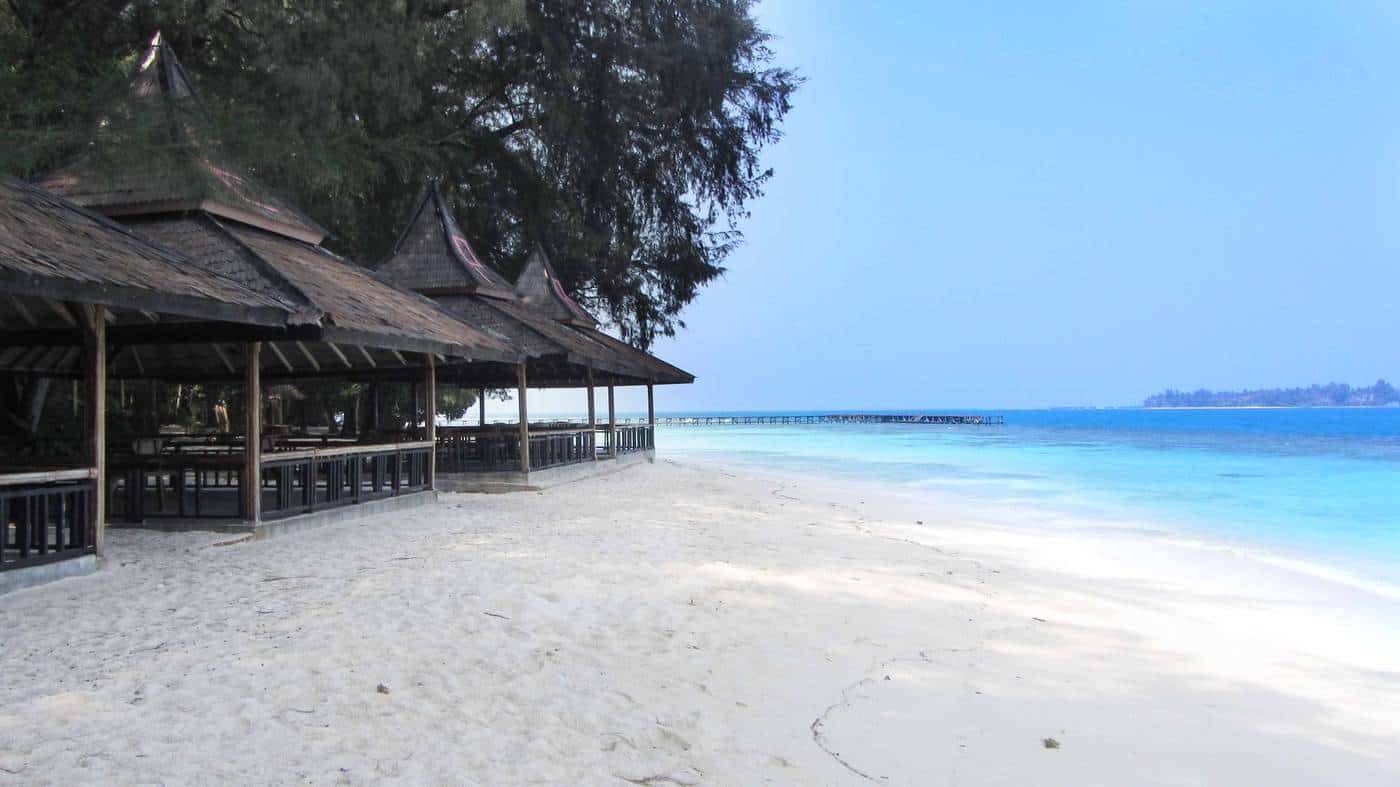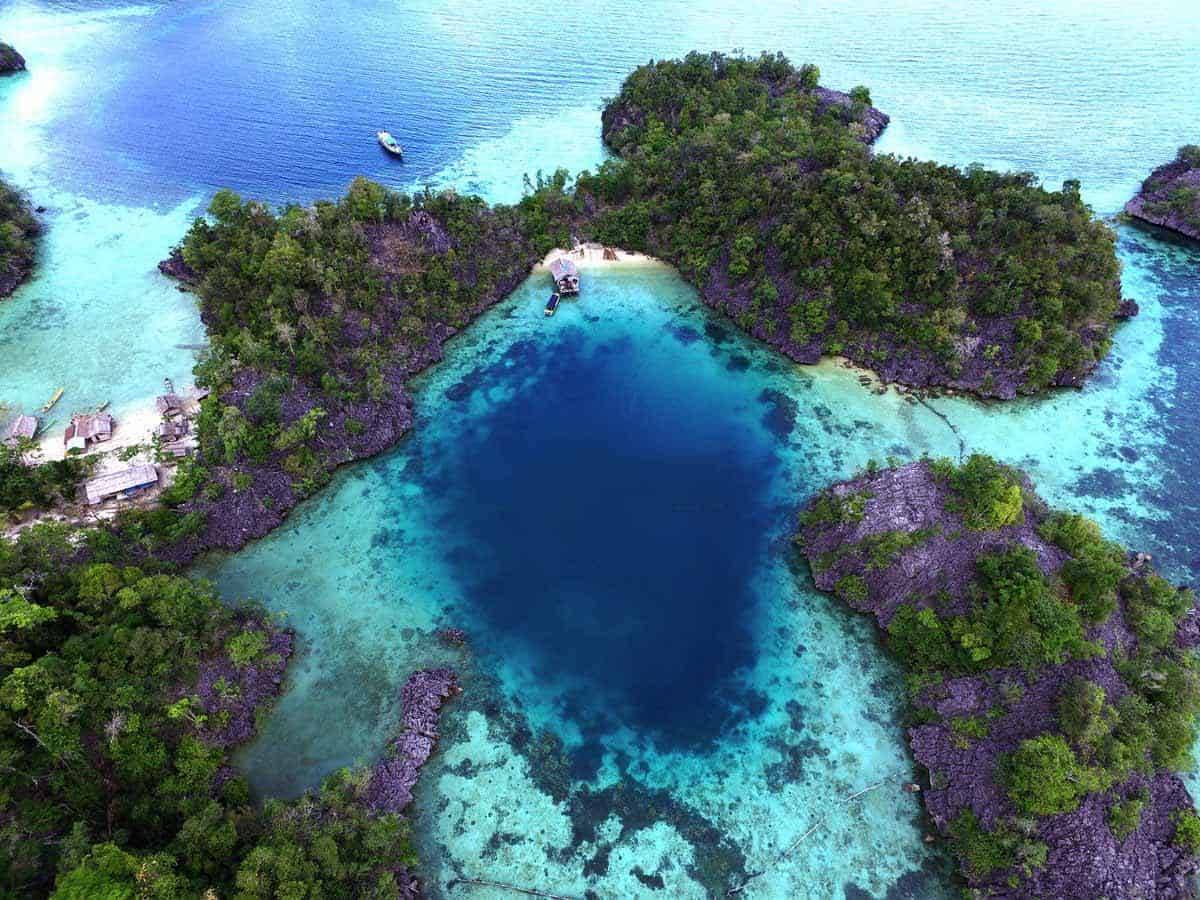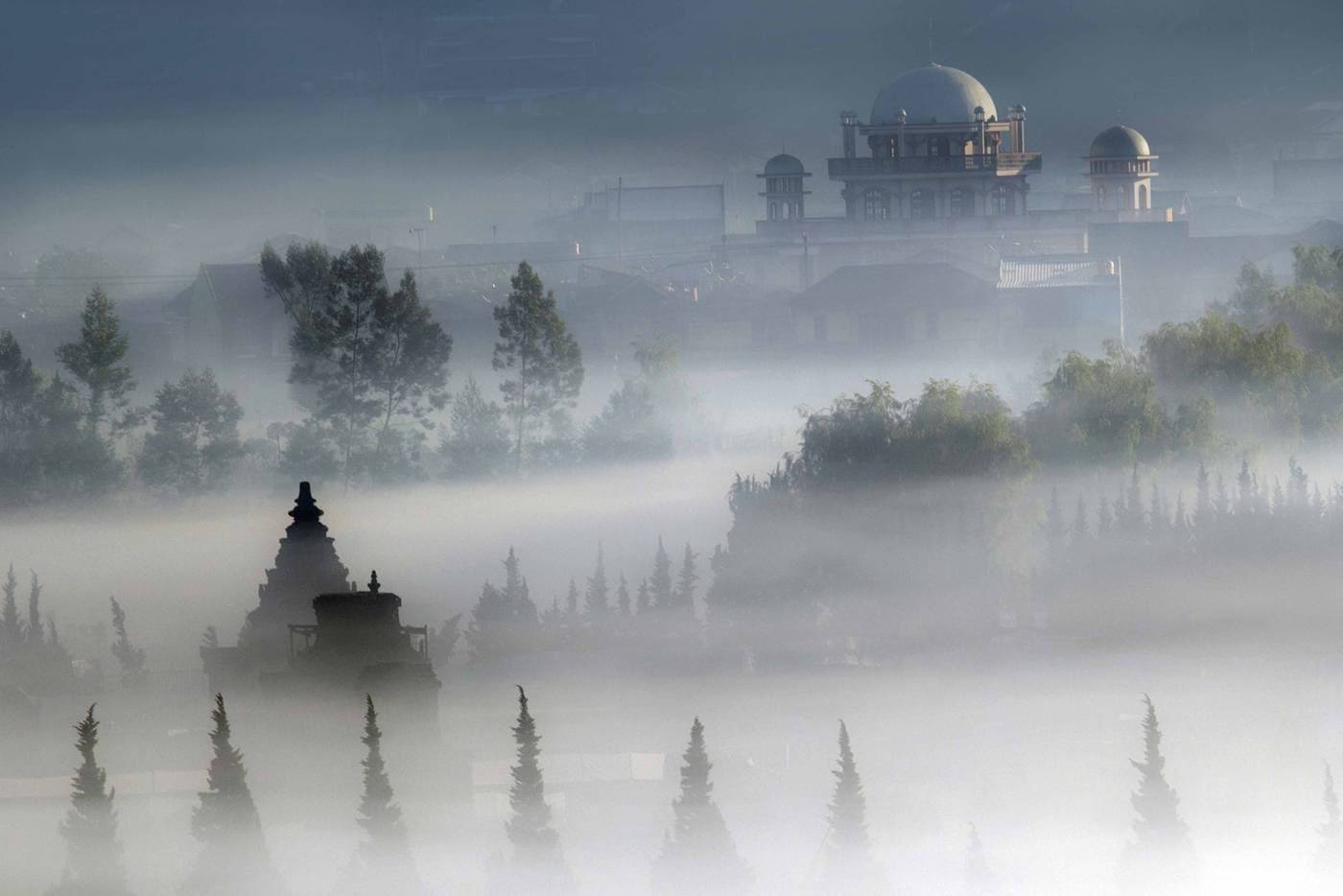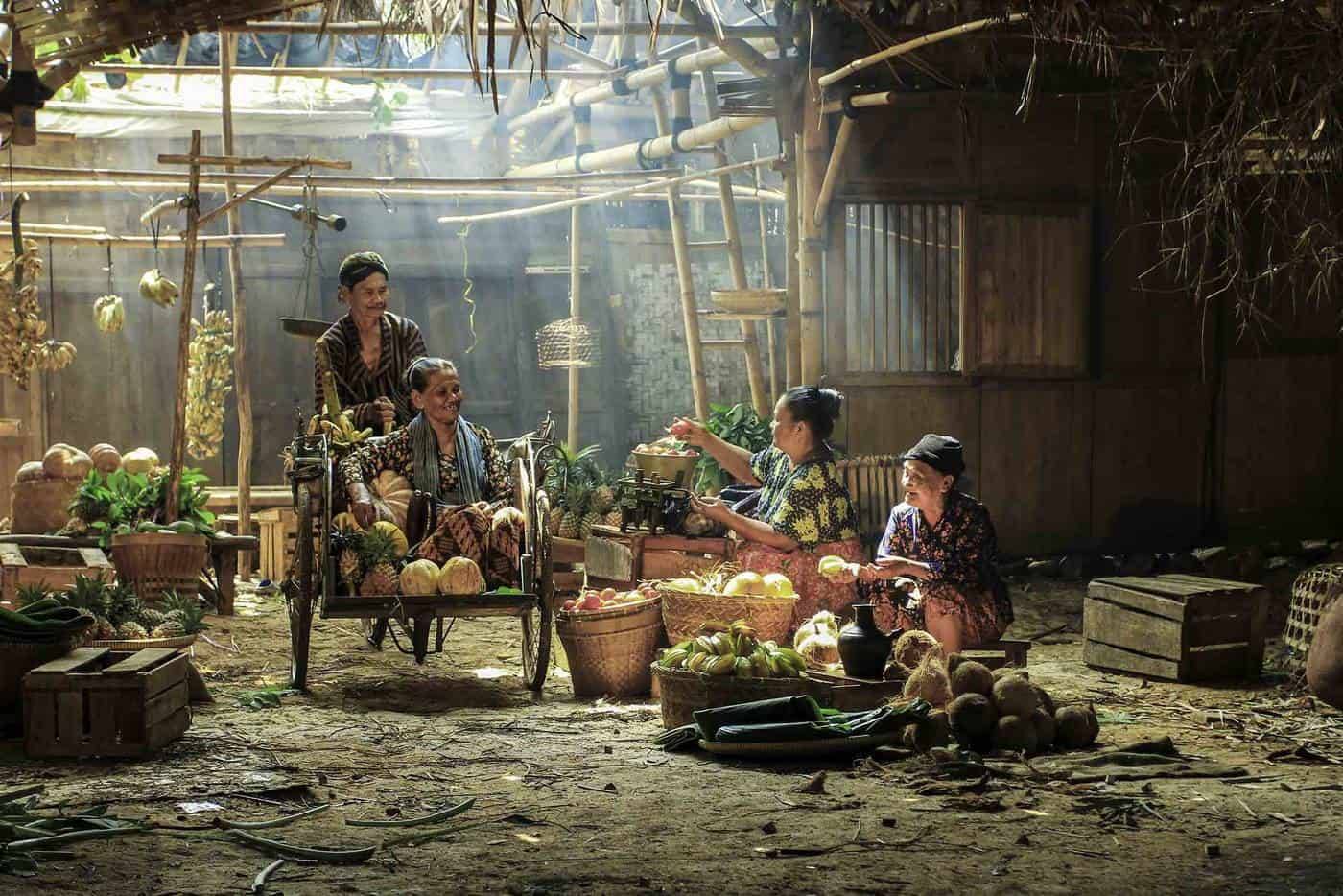
JAKARTA – THE BIG ‘DURIAN’ VILLAGE
Indonesian capital Jakarta was born in 1527, and today, it is a sprawling mega-city that works from its teeming freeways to its old Dutch colonial town, once known as Batavia), and today locally called as ‘Kota’.
Although the locals named Jakarta “The Big Village”, yet nothing indicates a sign of a village here. In fact, Jakarta is a typical Asian metropolis with everything that one would imagine it to be: an immense network of highways, roads and lanes flooded with noisy vehicles and buzzing scooters, ultra-modern skyscrapers, opulent shopping malls and myriads of entertainment options.
On the other hand, Jakarta is home to Indonesia`s oldest markets and ancient sites, but also some of the largest slums in the world. And all that is serving to almost 10 million inhabitants and thousands of curious visitors.
DISTRICTS OF JAKARTA & THE MAJOR POINTS OF INTEREST
The city of Jakarta is divided into six main districts, and each of them offers the following points of interest:
1.CENTRAL JAKARTA (JAKARTA PUSAT) – sightseeing area with a 132 m high Monas National Monument that is located in world’s largest city square “Lapangan Merdeka”, presidential palace, government building, Istiqal Mosque (the largest Mosque in Southeast Asia), Jakarta Gothic Cathedral, National Museum of Indonesia, National Gallery of Indonesia and Jakarta Planetarium.
The area is also home to Jakarta’s major landmark Bundaran HI or the Hotel Indonesia Traffic Circle, which is where the most exclusive malls can be found. Jalan Jaksa or Jaksa road is a backpacker street where numbers of budget hotels and restaurants for travellers are located.
2.WEST JAKARTA (JAKARTA BARAT) – Dutch colonial era buildings are in Jakarta Kota Tua (the old Batavia town), and its alternative and quirky surrounds defined by street food, markets, hawkers, craft and art shops, souvenirs and others.
Here you can find the Fatahillah Museum, Jakarta History Museum and other museums, but most importantly this area is home to Jakarta’s Chinatown called “Glodok” (various markets, shops, temples, street promenades and the largest mall in the city “Mall Taman Anggrek”, also called ‘Orchid Garden Mall’.
3.SOUTH JAKARTA (JAKARTA SELATAN) – up-market area for the rich and Jakarta-elite’s residential district; opulent shopping malls, luxurious restaurants, grand hotels, bars and nightclubs and also the city business centre.
Kemang is a street filled with lanes of the most popular restaurant, bars, and deluxe shops.
Senopati has great chill-out places, lounges, markets and a more relaxing ambience. South Jakarta is also home to Gelanggang Bung Karno Stadium (Senayan Sports Complex) – Indonesia’s largest stadium.
4.EAST JAKARTA (JAKARTA TIMUR) – industrial zone of the city but also culture-based recreational quarter Taman Mini Indonesia Indah (Beautiful Indonesia Miniature Park with myriads of purpose-built attractions), Cibubur campground and the Halim Perdanakusuma Airport.
5.NORTH JAKARTA (JAKARTA UTARA) – main port and harbour area famous for its fresh seafood, featuring entertainment and amusement options such as Ancol Bayfront City (Asia’s largest integrated tourism area) where you can find theme parks, aquariums, art markets, eco parks, shopping mall and beachside attractions.
The harbour of North Jakarta is a gateway to the favourite weekend and holiday destination – The Thousand Islands, situated just across the sea of Jakarta. Sunda Kelapa is the old port of Jakarta, situated on the estuarine Ciliwung River.
6.THE THOUSAND ISLANDS (KEPULAUAN SERIBU) – these gorgeous off-shore islands can be reached by a jetty in a short time from the Muara Karang Port, and they provide a wonderful escape from the hustle and bustle of Jakarta.
Marine National Park, top holiday resorts, restaurants and multiple attractions will greet the visitors (brilliant diving and snorkelling, swimming and water sports activities).
WHAT TO SEE & DO IN JAKARTA
Jakarta offers all sorts of attractions and activities to do. Whether it is sightseeing, shopping, food and entertainment or beach, relax and nature, there truly is something for everyone: old buildings and modern architecture, dazzling markets, exclusive shopping malls, street food, fine dining restaurants, lounge bars and nightclubs, special events, fascinating museums and art galleries, sport venues, parks and gardens, purpose-built amusement and theme parks.
SIGHTSEEING
Most of the city landmarks are located in the Central Jakarta. The 132 m high Monas National Monument at the world’s largest city square “Lapangan Merdeka” has an observation deck available for the visitors. The nearby presidential palace, government building, Bundaran Fountain, Istiqlal Mosque (the largest Mosque in Southeast Asia), Jakarta Gothic Cathedral, Jakarta’s major landmark Bundaran HI and the Hotel Indonesia Traffic Circle are all at the heart of Jakarta.
Dutch colonial era buildings can be found in Jakarta Kota Tua (Old Batavia Town).
Sunda Kelapa Old Port is a lovely historic area with numerous old sites and landmarks dating back to the Dutch colonial era.
MUSEUMS AND GALLERIES
Central Jakarta is home to the major cultural institutions – National Museum of Indonesia, National Gallery of Indonesia and Jakarta Planetarium.
In West Jakarta you can pay a visit to the Fatahillah Museum, Jakarta History Museum and other museums; Gedung Kesenian Jakarta (Jakarta Arts Theatre), Museum Art Mon Décor (modern national artwork), Textile Museum (national fabric icons batik, ikat and kain ulos), Satria Mandala Museum (War Museum), Museum Wayang (Puppet Museum), National Archive Museum or the Museum of Fine Ceramic and Art.
SHOPPING AND ENTERTAINMENT
The mega-city of Jakarta offers a good collection of large shopping complexes stuffed with luxurious stores but also inexpensive markets in Chinatown.
The largest mall in the city “Mall Taman Anggrek”, also called ‘Orchid Garden Mall’. Besides, Plaza Indonesia, Senayan City Mall, Central Park Mall and Grand Indonesia are among the favourite.
South Jakarta is home to Gelanggang Bung Karno Stadium (Senayan Sports Complex) – Indonesia’s largest stadium. Fans of soccer will surely add it to their itinerary.
The culture-based Taman Mini Indonesia Indah (Beautiful Indonesia Miniature Park) offers an exciting tour of 30 provinces of Indonesia with samplings of the country’s more than 250 cultures (Museum Indonesia, IMAX theatre and other purpose-built attractions).
Ancol Bayfront City is Asia’s largest integrated tourism area where you can find theme parks, aquariums, art markets, eco parks, marina, beach, shopping mall and other seaside attractions. Ancol Dream Park consists of a theme park, Fantasy World, Sea World, Ocean Park, Fantastic Multimedia and Laser Shows.
MARKETS AND STREET FOOD
Mangga Dua, Tanah Abang, Pasar Santa and Pasar Baru are big market complexes with assorted goods, including clothes, shoes, souvenirs, household supplies and electronics. Traditional markets typically sell food, fish, fruit and vegetables – Jakarta Fruit Market and Ranch Market.
Night markets are perhaps the most popular anywhere in Asia and Jakarta is no exception; both, Mangga Besar and ‘Monumen’ are worth the visit.
Whereas Jakarta`s Fish Market, at the mouth of Ciliwung River, has an educational marine Museum Bahari, the Pramuka Bird Market is a controversial attraction with a large variety of exotic birds in cages on sale.
Jalan Surabaya is a bustling open-air antique market worth seeing, as well.
Jakarta is famous for street food and trying some of these is the best way to discover the local cuisine: Glodok Chinatown, Monas Square and Kota Tua (old town) have an excellent choice of foods.
Also, most of the shopping malls will have a food court selling reasonably cheap meals.
NIGHTLIFE
Fairly safe nightlife goes on in the South Jakarta which is the richest but also the most expensive area with many opulent shopping malls, luxurious restaurants, grand hotels, rooftop bars and nightclubs and also the city business centre.
Kemang is a street filled with lanes of the most popular restaurant, pubs and nightclubs.
Senopati has great chill-out places, lounges, markets and a more relaxing ambience.
Kota Tua has a wide range of restaurants and social venues, too.
The budget option for good nightlife is Jalan Jaksa – the backpacker street, where numbers of budget hotels and restaurants and bars for travellers are located.
Jakarta’s Chinatown – Glodok is home to the largest mall in the city “Mall Taman Anggrek” (Orchid Garden Mall).
PARKS & NATURE
Jakarta city might well be one of the busiest cities on earth, but it also provides many green areas, gardens and parks; Tebet Honda Park, Suropati Park, Menteng Park, Langsat Park, Ayodya Park and Waduk Pluit Park.
The Cibubur campground is where the locals enjoy their nature in a relaxing verdant surrounding and the Mangrove Forest in North Jakarta is a beautiful eco-tourism domain perfect for outdoor activities.
Taman Mini Indonesia Indah is a culture-based attraction with lovely parks and gardens and a large open-air museum where one can spend hours walking around.
Ragunan Zoo is a good place to learn more about the Indonesian fauna and see 270 species of native animals such as Komodo dragon, orangutan, tapir, Sumatran tiger and elephant, various coloured birds and reptiles. It also includes a children`s zoo and a lake with boat rides. It is the world`s oldest zoo.
Nevertheless, the favourite weekend-away destination is definitely the nearby Thousand Islands. This gorgeous off-shore archipelago can be easily reached by a jetty from the Muara Karang Port, and they provide a wonderful escape from the hustle and bustle of Jakarta.
The Marine reserve will greet the visitors with top holiday resorts, restaurants and multiple attractions, e.g. brilliant diving and snorkelling, swimming and various water sports activities.
USEFUL TRAVEL TIPS
- Jakarta is a Muslim city, and you should be wearing appropriate clothing at all times, especially the female gender
- Never drink tap water even if staying a top resort
- Do not drink alcohol in public
- Try to avoid the ‘red zones’ and stay away from dodgy areas and drugs (there is a death penalty for drug dealing in Indonesia )
- Beware of the common taxi scams (always make sure that the meter is on)
- In the wet season, Jakarta often gets flooded, and many areas get cut off within minutes (particularly, in the lower parts of the city and near rivers)
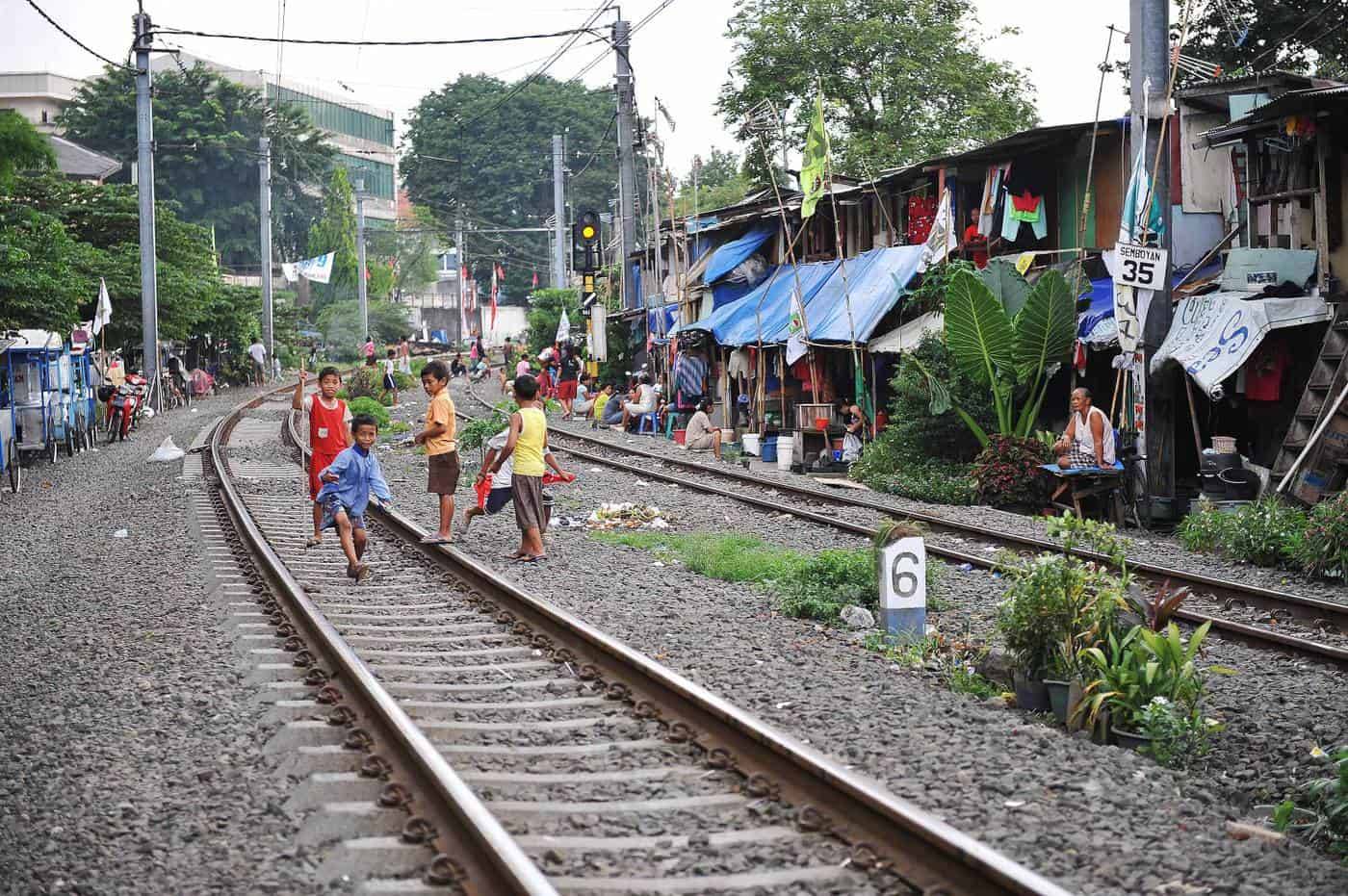
Many suburban areas of Jakarta are extremely poor and can be dangerous and visiting these should be done with a local guide
WHEN TO TRAVEL
Jakarta is a metropolis with predominantly indoor and purpose-built attractions, and weather does not really matter. However, during the wet season (Dec-Mar) the city often gets flooded and might get a bit sticky, and the dry one is pretty hot (June-Sep).
NOTE Try to avoid travelling on weekends and public holidays, especially if visiting for amusement and theme parks.
TO GET AROUND
Jakarta`s traffic is horrendous (quite literally), and the only bearable way to get around is public transport; there are trains, buses, shuttle mini vans (ideal for groups), taxis, bajaj (tuk-tuk, up to 4 people) or ojeks (scooter taxi, perfect for single travellers).
TO GET THERE
Fly to Jakarta.
For all international flights go to www.momondo.com or www.skyscanner.com)
For all domestic Indonesian flights check out www.garuda-indonesia.com
